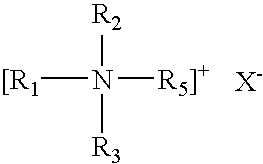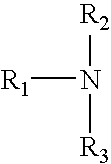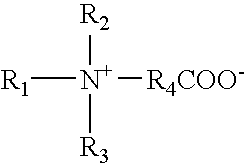Methods for recovering oil from an oil reservoir
a technology of oil reservoir and oil, applied in the direction of fluid removal, borehole/well accessories, chemistry apparatus and processes, etc., can solve the problems of limited effectiveness of oil pushers, primary physical action, and inability to reduce ift, so as to reduce ift and increase the viscosity of flooding fluid.
- Summary
- Abstract
- Description
- Claims
- Application Information
AI Technical Summary
Benefits of technology
Problems solved by technology
Method used
Image
Examples
Embodiment Construction
[0014]It was surprisingly found that a single component could be added to a flooding fluid to significantly lower IFT while significantly increasing the viscosity of the injected water during the water flooding process in tertiary oil recovery.
[0015]In the methods of the present invention, a flooding fluid having one or more non-polymeric surfactants is introduced, e.g., injected, into the reservoir or formation at elevated pressure for the purpose of pushing or expelling oil from it. Useful surfactants include non-polymeric, viscoelastic cationic, amphoteric, zwitterionic surfactants, and anionic surfactants. Non-polymeric surfactants that form viscosifying aqueous fluids are advantageous because they typically are, as a class, of lower molecular weight than polymers. Amphoteric surfactants have both a positively charged moiety and a negatively charged moiety over a certain pH range (e.g. typically slightly acidic), only a negatively charged moiety over a certain pH range (e.g. typ...
PUM
 Login to View More
Login to View More Abstract
Description
Claims
Application Information
 Login to View More
Login to View More - R&D
- Intellectual Property
- Life Sciences
- Materials
- Tech Scout
- Unparalleled Data Quality
- Higher Quality Content
- 60% Fewer Hallucinations
Browse by: Latest US Patents, China's latest patents, Technical Efficacy Thesaurus, Application Domain, Technology Topic, Popular Technical Reports.
© 2025 PatSnap. All rights reserved.Legal|Privacy policy|Modern Slavery Act Transparency Statement|Sitemap|About US| Contact US: help@patsnap.com



